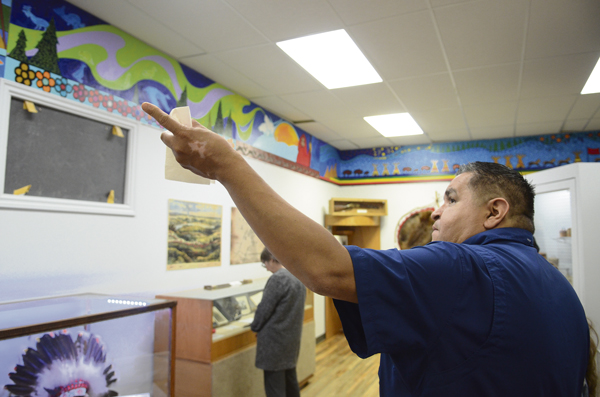
Fred Payton
The Museums Association of Saskatchewan, commonly referred to as MAS, develops policy and provides direction for programmes and services to benefit all Saskatchewan museums. As a member of MAS, the Prince Albert Historical Society benefits from that policy and direction.
This past year, MAS sent us a publication entitled “Museums and Sustainability: Decolonizing the Museum”.
The basic tenet of the publication was that museums are a colonial institution. As such, if we wish to be representative of our community’s history we need to ensure that we present the community’s history not from the time of the arrival of the European settlers, but from the time when the first people began to congregate here.
It is important that the museum be more than a place espousing the colonial history of the community.
In other words, we must try to decolonise the museum.
I take some pride in the fact that the management and staff of the Prince Albert Historical Society has been ahead of the game when it comes to decolonizing our Historical Museum. Our curator, Michelle Taylor, started meeting with Indigenous Knowledge Keepers in late 2016, with the first formal consultation to begin the decolonization process occurring in early 2018.
We recognize that there have been people in the Prince Albert area extending back 11,000 years, and know that our history has been shaped not only by them, but also by what was left behind by the ice age.
Looking around the Historical Museum, it was recognized that we have done a good job of presenting Prince Albert’s history beginning in 1866, but have been less effective presenting its history during that period encompassing the fur trade.
And quite honestly, we have not been very successful with respect to the time prior to the arrival of the Europeans and the Metis people. Little information has been presented about how this area has been a meeting place for hundreds of years, visited by various tribes each year to trade goods, interact socially, and to exchange their culture.
Using funding provided by the Northern Lights Community Development Corporation, local Knowledge Keeper Dr. Leo Omani of the Dakota First Nation helped Ms. Taylor to identify knowledgeable, educated and respected members from the Dene, Swampy Cree, Woodland Cree, and Plains Cree communities to assist us in identifying the provenance of the artifacts and archival materials which had been donated to us, and to add to their history where possible.
These Knowledge Keepers also helped to guide us with respect to the handling, display, and storage of artifacts considered to be sensitive and sacred.
A similar process was used to identify Metis Knowledge Keepers, with whom we are working to determine how best to identify who is Metis, their role in the fur trade, their relationship with the First Nations people, and their impact on the settlement and development of Prince Albert.
A start has occurred with respect to the development of a room which will exhibit our Indigenous history. As well as providing assistance with our artifacts and archives, the Knowledge Keepers have made suggestions regarding how best to display their history and contributions.
A Mural Project, involving both First Nations and Metis artists, resulted in murals representing what is important to them.
This helps us to show the impact of the Indigenous people on the development of Prince Albert. It enhances the knowledge of our visitors regarding the First Nations and Metis peoples of the region, but also strengthens the pride of our Indigenous citizens by displaying their adaptability and ability to change their lifestyles based upon how cultures have changed over time.
In addition to the benefits accruing to the Historical Society, our work with the Knowledge Keepers has given us an opportunity to work with the City of Prince Albert and the Downtown Business Improvement District to promote the Indigenous history of our area, providing a cornerstone for developing and improving relationships amongst the City, our Downtown businesses, the First Nations people, and the Metis people.
It has even resulted in the Prince Albert Historical Society earning an award from the Museums Association of Saskatchewan for the community Mural Project, as well as that same project being named one of twenty-five finalists in the Governor General’s national history competition.

